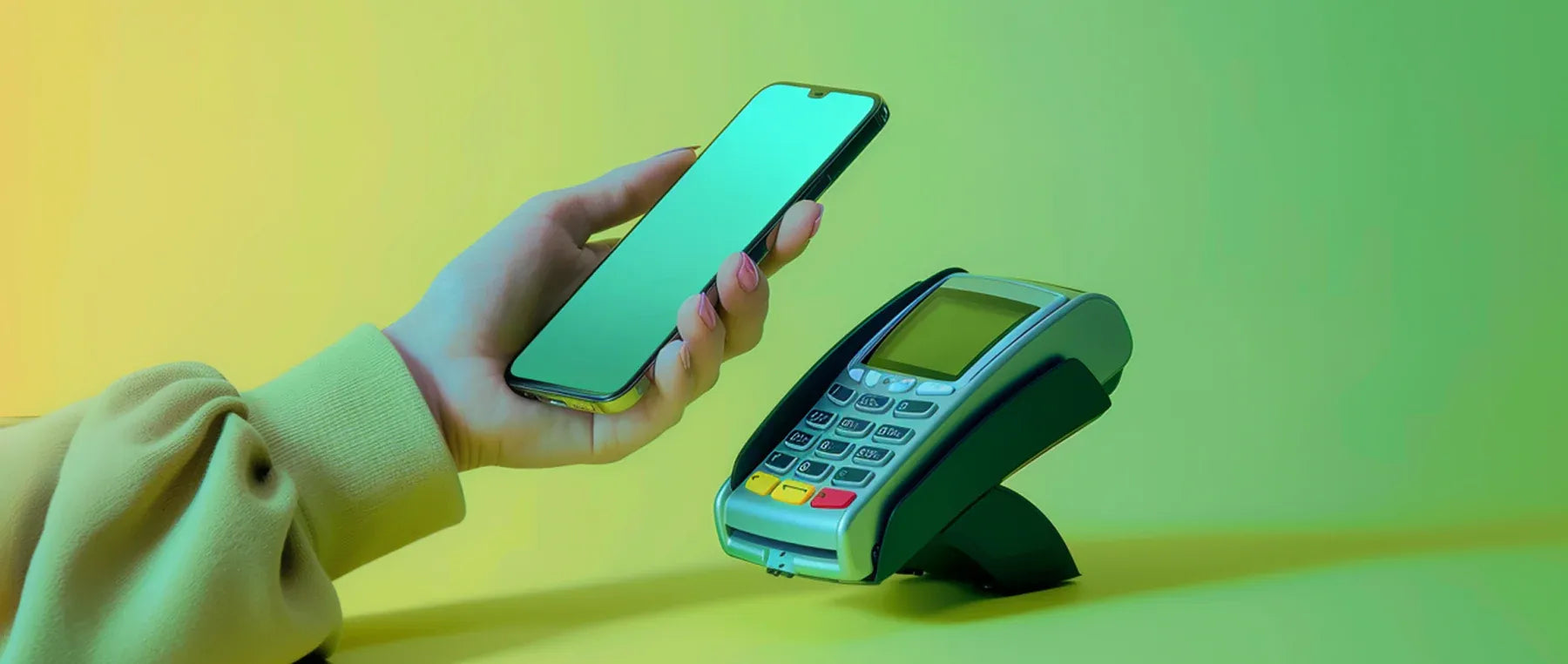
How to Accept Mobile Credit Card Payments via Smartphone: A Comprehensive Guide for Retailers
Table of Contents
- Key Highlights:
- Introduction
- The Landscape of Mobile Payment Acceptance
- How to Take Credit Card Payments on Your Phone In Person
- How to Take Credit Card Payments Over the Phone (Card-Not-Present)
- Benefits of Processing Mobile Payments
- Essential Security Measures for Mobile Payments
- Take Card Payments from Your Smartphone with Shopify
- FAQ on Taking Card Payments from Your Phone
Key Highlights:
- Retailers can efficiently process credit card payments using smartphones with equipped card readers and compliant payment systems.
- Various tools, including Tap to Pay technology, mobile POS systems, and virtual terminals, exist to facilitate seamless transactions, both in-person and over the phone.
- Implementing robust security measures and compliance protocols is crucial for safeguarding sensitive payment data and mitigating fraud risks.
Introduction
Mobile payment technology has transformed modern retail, allowing businesses to accept credit card payments directly from smartphones. This capability is not only convenient but also essential for retailers seeking to streamline operations in a fast-paced environment. The shift towards mobile transactions offers numerous advantages, such as reduced hardware costs, enhanced customer service, and increased flexibility to meet customer demands.
As more consumers prefer contactless payment options, retailers must adapt their payment processing methods to remain competitive. This guide provides a thorough overview of how businesses can accept credit card payments via smartphones, highlighting the necessary tools, methods, and compliance considerations to ensure secure transactions.
The Landscape of Mobile Payment Acceptance
In today’s retail world, the ability to accept mobile payments is no longer a luxury but a requirement for success. Smartphones are equipped with advanced technologies that enable them to function as payment processing devices, reducing the need for traditional, stationary point-of-sale (POS) systems.
Can You Accept Credit Card Payments on a Phone?
Any business owner can accept credit card payments through their smartphone if they have the right card reader and payment-processing provider. Companies like Shopify empower their merchants with dedicated mobile apps, enabling them to ring up orders and sync card readers seamlessly. This eliminates the need to invest in separate, expensive hardware, thus maximizing business efficiency.
Tools to Accept Card Payments from Your Smartphone
A variety of tools are available to facilitate mobile payments, each designed to cater to different business models and retail environments.
Mobile POS Systems
Mobile Point-of-Sale (mPOS) systems represent a significant advancement in payment processing. They allow retailers to process payments using smartphones or tablets and often come integrated with payment processing software. Some systems may require specific devices, while others can be downloaded as apps. A complete mPOS package typically includes a mobile card reader, software, and possibly a portable device.
For instance, Tap to Pay technology eliminates the necessity for a separate card reader, allowing merchants to accept payments directly through their smartphones. As explained by Mike Esiobu from Unfinished Legacy, this functionality enhances the customer experience by making payments more streamlined and efficient.
Virtual Terminals
Virtual terminals offer another avenue for accepting payments, especially when the customer's card is not physically present. Retailers can log into a secure application, manually entering customer information to process card-not-present (CNP) transactions. This method appeals particularly to businesses that operate online or have mail orders.
Payment Links
Creating secure payment links allows businesses to facilitate transactions without needing to physically accept a card. By sending a URL to customers, they can securely enter payment information and complete their purchases online. Payment links typically have a predefined expiration time to minimize fraud risks.
How to Choose the Right Mobile Payment Method
Selecting the appropriate mobile payment method requires careful consideration of several factors:
- Transaction Fees and Pricing Models: Evaluate the costs associated with different payment methods. In-person transactions generally incur lower fees compared to CNP transactions due to the increased risk of fraud associated with the latter.
- Security: Opt for payment methods that minimize direct handling of sensitive card information. This could include employing payment links or mPOS systems with built-in security features.
- Integrations: Ensure the mobile payment solution seamlessly integrates with existing business frameworks. With Shopify, for example, the POS system supports both CNP transactions and contactless payments through Tap to Pay.
Furthermore, businesses can combine multiple payment methods based on customer needs—using Tap to Pay for quick, in-person sales while employing payment links for larger orders placed remotely.
How to Take Credit Card Payments on Your Phone In Person
For businesses looking to process payments face-to-face, several steps are necessary to ensure secure and efficient transactions.
1. Find a Compatible Credit Card Processor and Mobile POS App
The first step is to identify a credit card processor that aligns with your POS system. Platforms like Shopify Payments facilitate easy transactions with various credit card issuers, ensuring cost efficiency. Always consider transaction fees based on your business's order history to select the best provider.
2. Choose a Mobile Credit Card Reader
To process payments directly through smartphones, merchants can take advantage of built-in contactless payment technology. If this feature is unavailable, opt for a mobile card reader that can securely accept diverse payment methods—be it contactless, chip, or magnetic stripe transactions.
When selecting a reader, ensure it meets PCI compliance and EMV standards to secure sensitive customer information during transactions.
3. Set Up and Sync Your Ecommerce Software
The chosen credit card reader should integrate smoothly with your POS software to ensure a streamlined payment process. With appropriate syncing, business owners can keep track of essential data like pricing, taxes, and inventory levels at a glance.
4. Process the Mobile Payment Securely
Before commencing actual transactions, run a trial to ensure that your payment system operates correctly. A mock transaction can confirm that the orders and payments are processed efficiently, giving you peace of mind when engaging with customers.
5. Send a Receipt
Documentation of the transaction is crucial for future reference. Utilize the POS app to send digital receipts via email or text, or connect a physical receipt printer to provide customers with a tangible proof of purchase.
How to Take Credit Card Payments Over the Phone (Card-Not-Present)
Accepting payments over the phone presents unique challenges. Nevertheless, businesses can implement secure practices to safeguard customer information.
1. Understand CNP Risks and Resulting Higher Fees
Card-not-present transactions come with elevated risks, as they rely on manual input of card data. Retailers must be vigilant, as these transactions are susceptible to higher fraud rates and often attract increased fees from payment processors.
2. Choose a Secure Payment Gateway or Virtual Terminal
A secure payment gateway facilitates safe transactions by encrypting sensitive data as it is transmitted. Popular options include Shopify Payments, Stripe, and PayPal. These gateways help reduce fraud risk by leveraging built-in security protocols.
3. Integrate CNP Payments with Your Ecommerce Platform
Integrating phone payment capabilities with an existing ecommerce platform enhances security and streamlines operational efficiency, allowing for easy management of sales data and inventory.
4. Securely Gather Customer Credit Card Details
When processing a payment, gather necessary customer credit card information discreetly. Advising customers to provide details via their phone keypad can enhance security and protect against eavesdropping.
5. Authorize the Payment and Provide Confirmation
After entering the customer’s payment details, initiate a payment authorization request through your payment gateway. Receipt of confirmation signifies that the transaction is successful, allowing you to follow up with a confirmation message or an electronic receipt.
Benefits of Processing Mobile Payments
More than just an innovative solution, processing mobile payments brings several advantages:
Cost Savings with Existing Equipment
Retailers can minimize equipment costs significantly by using smartphones instead of investing in expensive cash registers. This approach enables them to streamline operations without sacrificing functionality.
Customer Convenience and Speed
Mobile payments facilitate quicker checkout processes. Businesses can attend to customers anywhere within their establishment, reducing queues and enhancing overall satisfaction.
Wider Range of Payment Methods
Smartphone-based transactions typically allow businesses to accept various payment types, including mobile wallets and contactless payments, ultimately catering to consumer preferences.
Enhanced Security
Mobile payment systems present better security than dealing with cash. The funds transfer processes directly from the payment processor to the merchant's bank account, minimizing theft risks associated with physical cash.
Increased Flexibility for Diverse Business Models
The ability to accept payments via phone allows for greater operational flexibility, accommodating various sales scenarios that extend beyond traditional retail environments.
Essential Security Measures for Mobile Payments
While the integration of mobile payment technology presents many benefits, it is vital for retailers to implement strict security protocols.
PCI DSS Compliance for Mobile Payments
Businesses must adhere to PCI DSS standards to handle sensitive payment data. This compliance is especially crucial for businesses processing CNP transactions, which require stringent security measures.
EMV Standards and Chip Card Security
EMV standards significantly enhance transaction security through the use of chip cards, protecting data from skimming and unauthorized access.
Tokenization and Encryption for Data Protection
Implementing tokenization and encryption ensures that sensitive card data remains secure during transmission. This helps businesses safeguard customer information and can enhance consumer trust.
Fraud Prevention Best Practices for CNP Transactions
Maintaining detailed records is essential for both fraud prevention and chargeback management. Businesses should keep information like transaction logs, communication records, and shipment confirmations.
Employee Training and a Secure Environment
Educating staff on best practices for accepting payments—whether in person or over the phone—establishes a culture of security within the organization. Staff should be trained to notice suspicious behavior, protect customer data, and avoid common fraud pitfalls.
Take Card Payments from Your Smartphone with Shopify
Shopify's unified commerce platform enables retailers to turn their mobile phones into powerful payment processing tools. With features like Shopify Payments and Tap to Pay, businesses can securely accept payments without the burden of additional hardware. This integration streamlines operations and enhances the customer experience.
By adopting mobile payment solutions, retailers can position themselves at the forefront of modern commerce, adapting to trends while meeting customer demands efficiently.
FAQ on Taking Card Payments from Your Phone
Can I use my phone to accept credit card payments?
Yes, anyone can accept credit card payments on their smartphone with a compatible card reader and a mobile payment application, like Shopify POS, which allows seamless transaction processing.
Is it legal to take card payments over the phone?
It is legal to accept card payments over the phone as long as you adhere to relevant security standards, such as PCI DSS compliance.
How can I accept credit card payments without a machine?
Credit card payments can be accepted without a machine through methods like virtual terminals, where you manually enter customer details, or by sending secure payment links for online completion.
How to accept card payments on the phone without a card reader?
Using Tap to Pay technology via Shopify POS, you can accept card payments directly on your smartphone, negating the need for an additional card reader.
How to receive a credit card payment over the phone?
Payments can be securely accepted over the phone through virtual terminals or payment links that allow customers to enter their details and complete the payment online.
POWER your ecommerce with our weekly insights and updates!
Stay aligned on what's happening in the commerce world
Email Address
Handpicked for You

08 September 2025 / Blog
How to Avoid Greenwashing: Rules, Real-World Examples, and a Practical Playbook for Honest Environmental Claims
Read more
08 September 2025 / Blog
Klaviyo 2025: How its AI-Driven CRM Transforms Shopify Email Marketing and the Customer Experience
Read more
08 September 2025 / Blog


